Lest We Forget: In Memory of Maidenhead and Maidenhead Norfolkians Players Who Lost Their Lives in The Two World Wars Part Four: First World War
15/11/2022 - 1.38
Mark Smith and Matthew Shaw
This is the fourth in a series of articles that commemorates the lives of Maidenhead and Maidenhead Norfolkians players who made the ultimate sacrifice in World War One and World War Two, based on the Maidenhead United FC match day programme series entitled Lest We Forget.
Albert Adaway

1908 Maidenhead Norfolkians Team Photo - Albert Adaway, bottom right seated on the ground. Source: Maidenhead Advertiser
Albert Adaway was born in 1884 in the village of Burnham, a bricklayer by trade and known to all as “Jockey” owing to his short stature.
He first played football for Burnham Minors FC and was a member of the side that played in their Berks and Bucks Minor Cup final defeat in 1901. He then moved on to play at junior level for his home village club of Burnham.
“Jockey” made the move into senior football with the Maidenhead Norfolkians in 1906 and stayed with the “red and whites” up until their final season of 1913/14. He played as a back in many of the Norfolk’s biggest games and was part of the team that won the Berks and Bucks Senior Cup in 1907, defeating Marlow 3-0.
At the outbreak of war in 1914, Albert joined the 1st Battalion Royal Berkshire Regiment. On the 25th September 1915, the first day of The Battle of Loos, the 1st Royal Berkshires were in reserve in the second line trenches but, at noon, they were ordered to move up to the front line. They were then ordered to Vermelles arriving at 5.00am on the 26th September and were being held in reserve during attacks on the Hulluch Quarries.
The Berkshires had been split into working parties to consolidate captured trenches. At 11.30pm on the 27th September, Albert’s regiment was ordered to attack Fosse 8. This German position was a fortified and well defended large slag heap of mining waste which had held out for three days of previous attacks. It was situated half a mile to the north of the Berkshires current position.
At 2.30am on the 28th September, the tired 1st Battalion Berkshires advanced across unfamiliar ground in bright moonlight but came under heavy fire about 400 yards from the Fosse. The advance stopped seventy yards short owing to fire from a German trench known as “Slag Alley” whilst the Germans on top of the slag heap were also able to throw bombs down onto the advancing Berkshires.
Following another attack some men managed to get half way up the slag heap before being repulsed by grenades thrown by the Germans but at this point the Berkshires were ordered to withdraw to the British front trenches. Tragically, Albert was one of the casualties during this unsuccessful attack.
Albert’s body was never found and therefore he has no known grave. He is commemorated on the Loos Memorial to the missing, along with the four officers and eighty other men of the 1st Royal Berkshires who were never identified. Albert was 31 years old when he was killed.
Albert is also commemorated on the War Memorial (photo below) in his home village of Burnham, Buckinghamshire.
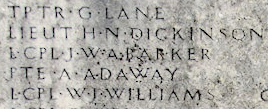
Source: Mary Bentley
Known Maidenhead Norfolkians FC appearances = 179, 2 goals
Senior team debut - 8th September 1906 v Shepherds Bush, Great Western Suburban League
Final appearance – 10th January 1914 v Windsor and Eton, Oxford Hospital Cup
Harold George Jefferies
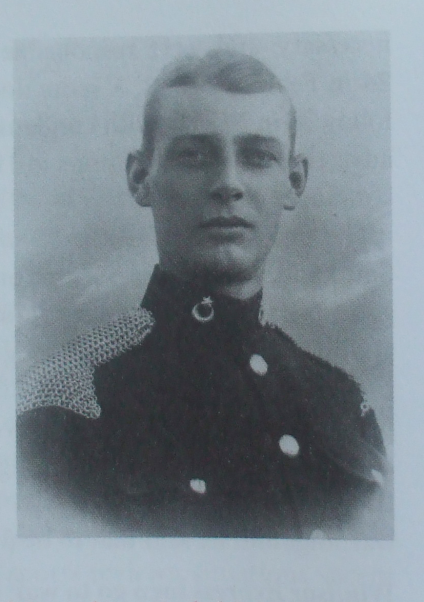
Source: Carrie Pike
Harold George Jefferies was born in 1893 in Windsor, the son of George and Alice Jefferies. Known to all as Jeff, he was educated at Eton College Choristers’ School where he played in the football team as a goalkeeper. It was reported that he preferred playing football to singing in the choir. In his last two years at Eton, he captained his school at both football and cricket. He excelled at rowing and also on the running track winning many senior events at the college. He also won the school’s challenge cup two consecutive years for being the best all round swimmer.
Harold was a goalkeeper from an early age and played for Windsor and Eton Minors for three years. In his final year with the team, the Minors won the Windsor and District Minor League without dropping a single point. In the 1910/11 season, he progressed to the Windsor and Eton Reserve side in the South Bucks and East Berks League and featured in almost every match for two years. He then progressed to the Windsor and Eton First XI in the 1912/13 season and played twelve first team games for the Royalists when the club were members of the Great Western Suburban League. His good and consistent form saw him secure an appearance for the Berks and Bucks Junior Representative XI with his debut coming against London Juniors in the latter half of the 1911/12 season and Harold played in every match for the County Representative XI in the 1912/13 season.
At the start of the 1913/14 season, Harold joined Maidenhead Norfolkians and became their first choice goalkeeper for that season and also played once for the Berks and Bucks Senior Representative XI. He even managed to get on the score sheet for the Norfolkians in a match against Abingdon in the Berks and Bucks Cup taking a penalty in a 6-0 win. His form as the Norfolkians goalkeeper helped the “red and whites” to achieve the runners-up position in the Great Western Suburban League. During the summer, Harold would also play cricket for Windsor and Eton CC. This must have helped him in his work as he was employed as an assistant reporter for the Windsor and Eton Express and was responsible for many excellent sporting accounts that appeared in the newspaper.
Harold was a member of the “A” Squadron Berkshire Yeomanry and, at the outbreak of the First World War, his regiment was immediately mobilized. On August 5th 1914, he joined the 1st Mounted Division. On September 2nd, they were transferred to the 2nd Mounted Division and in mid-November were moved to Norfolk on coastal defence duties. In April 1915, Harold’s division were ordered to Alexandria in Egypt arriving between the 19th and 21st of April and were then posted to Cairo in the middle of May. The regiment was dismounted in the middle of August to take part in the Gallipoli campaign and they landed at “A” beach, Suvla on August 18th. Harold’s regiment, in which he was now a section leader was, on August 20th, camped at Lala Baba in readiness for a forthcoming attack to take place on August 21st 1915.
The action that resulted in Harold losing his life is rather confusing and there are conflicting reports of what actually happened. It does seem that as the Yeomanry advanced up Chocolate Hill and over Salt Lake, they came under heavy fire and sustained many casualties. A report from a fellow member of Windsor “A” squadron – Tom Luff, stated that he saw Harold alive, but lying injured in the leg, and when helping him to drink some water Harold seemed to recognize this person and spoke to him. Tom later discovered that Harold’s body had been found nearly two miles from where he had helped him and could not understand how Lance Corporal Jefferies had been found there. It was subsequently reported that Harold was buried on the western side of Chocolate Hill.
After the war had ended Harold’s grave could not be located, however his name appears on the Helles Memorial (photo below) to the missing in Turkey, as well as on the Windsor War Memorial and the New Berkshire Yeomanry Memorial outside Forbury Gardens in Reading.

Source: Carrie Pike
Known Maidenhead Norfolkians FC appearances = 26, 1 goal
Senior team debut - 8th September 1913 v Windsor and Eton (Great Western Suburban League)
Final appearance – 25th April 1914 v 19th Royal Hussars (Great Western Suburban League)
Alfred Edgar Littleton
Alfred Edgar Littleton was born in July 1883, the second youngest son of George and Mary Littleton (née White) of Bray Villa, St Luke’s Road, Maidenhead.
Alfred had been a carpenter’s apprentice but, by 1911, was working as an agent for the Prudential Assurance. He lived in Gordon Road, Maidenhead with his wife Annie and their two children, Edgar George and Annie May.
He played football for Norfolk Albion FC at junior level before following in the footsteps of his older brother, Harry, by joining the Maidenhead Norfolkians. Although never making a senior appearance, he was part of the Norfolkian team that won a Hungerford Football Club five a-side competition in April 1903. Alfred continued to play for the Norfolkians Reserve team until he moved to Cookham in 1905. He then joined Cookham FC who later amalgamated with other Cookham teams to become Cookham United, who played in the South Bucks and East Berks Junior League. Alfred was, for some time, the captain of the team. After Cookham United disbanded in 1910, Alfred took over the role of Honorary Treasurer of the reformed Cookham FC. He became a local junior referee around the same time and officiated in many local junior matches up until war was declared in 1914.
Alfred had previously been part of the local volunteer regiment for four years. In 1916, he joined the “Derby” scheme, which was for voluntary enlistment but it enabled him to defer being mobilized immediately. Members of this scheme were given a khaki armband with a red crown on it to show that they had volunteered and were able to carry on their day-to-day work until needed. Alfred was called up in May 1916 and joined the Royal Berkshire Regiment undertaking his training at Bovingdon Camp.
After being sent to France with the Berkshires he found himself on the Western Front as part of the ongoing battle of the Somme. On November 13th 1916, the Royal Berkshires were moved to Vallade trench and as the weather had recently been extremely wet the trench was awash with mud. The Berkshires were twice due to make an attack in the morning but these orders were cancelled. The unit was left awaiting further orders but, unfortunately, during this time, Alfred was one of nine men in the Berkshires who were killed by shell fire or German snipers.
Alfred has no known grave but is remembered on the Thiepval Memorial (photo below).
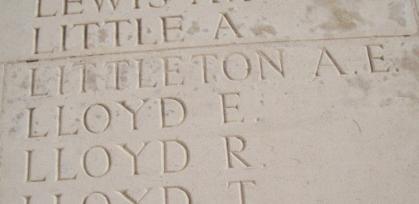
Source: Matthew Shaw
He and his brother, Harry - who also played football for the Maidenhead Norfolkians - are both on the Maidenhead War Memorial and the Roll of Honour inside St Luke’s Church, Maidenhead (photo below).
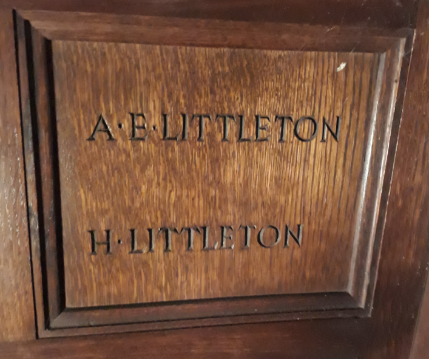
Source: Gillian Healey
Known Maidenhead Norfolkians Reserves appearances = 5 (would have been more but detailed information unavailable)
Presumed Reserve team debut – 1st February 1902 v Wooburn St Paul’s (Wycombe Cup)
Presumed Final appearance – 5th September 1903 v Maidenhead Reserves (South Bucks and East Berks League)
Charles George Woodwards
Charles George Woodwards was born in Maidenhead in 1887 to Charles and Elizabeth Woodwards of Ray Park Cottages. He worked as a labourer in the building trade.
Charles started playing football for Maidenhead Excelsior FC, a youth team which took the name of the old Maidenhead Excelsior club who, between 1877 and 1885, had been local rivals to Maidenhead FC until the original Excelsior were absorbed by the “red and blacks”. Charles was given the nickname “Wacker” which seems to have stuck throughout his football career, and was even used in the match reports in the local press.
It not known when Charles started to play for Maidenhead Excelsior but he almost certainly appears in this uncaptioned team photograph.
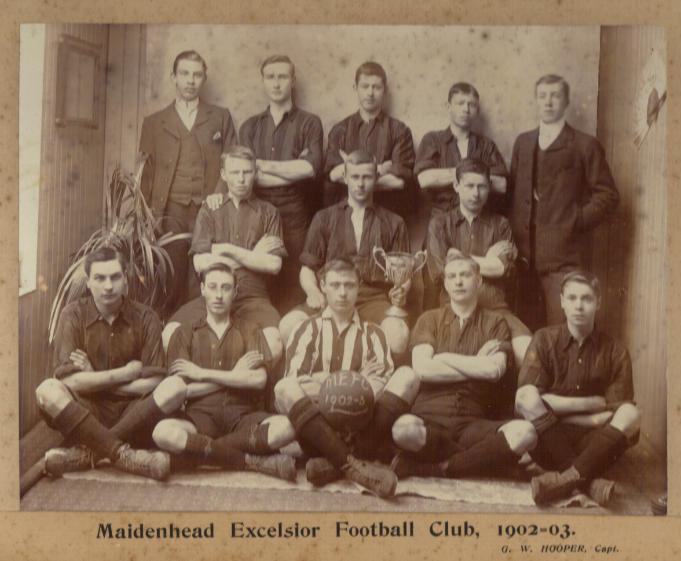
Source: Maidenhead Advertiser
Charles eventually joined the Maidenhead Norfolkians Reserves, where he remained for almost ten seasons and became vice captain of the side during the 1912/13 season. At the start of that campaign, on the 21st September 1913, the Norfolkians first team had a fixture against Uxbridge at Hillingdon Park and, after several players had dropped out, the Norfolkians were forced to travel a man short, whereupon on hearing this, Charles promptly mounted his pushbike and cycled all the way from Maidenhead to Uxbridge to ensure that the team was fully represented, although the Norfolkians lost the match by 7-2.
Although “Wacker” would make occasional first team appearances for the Norfolkians, in the 1913/14 season, he was also reported playing for the Maidenhead Gas Works FC team. Charles returned to the Norfolkians again and played in the 1st XI for the last two games of the 1913/14 season where he would have the honour to notch, what transpired to be, the very last goal to be scored by a player wearing the Maidenhead Norfolkians colours. The goal he scored turned out to be the winner in a 3-2 victory over the 19th Hussars which secured runners-up spot for the “Red and Whites” in the Great Western Suburban League.
Charles enlisted in London with the Royal Fusiliers “City of London Regiment” and during his service he obtained the rank of Corporal. However, he was caught up in the German offensive which had started a few days before he was killed on the 25th March 1918, as the British tried to hold back the overwhelming odds against them. He was 31 years old and has no known grave. He is commemorated on the Arras Memorial, Maidenhead’s War Memorial and St Luke’s Church Roll of Honour (photo below).
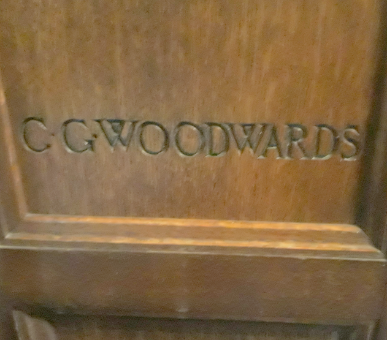
Source: Gillian Healey
Known Maidenhead Norfolkians FC appearances = 8, 4 goals (would probably have been more but information unavailable)
Presumed Senior team debut – 24th March 1909 at Uxbridge (Great Western Suburban League)
Presumed Final appearance – 25th April 1914 v Hanwell (Great Western Suburban League)
Known Maidenhead Norfolkians Reserves appearances = 23 (would have been considerably more but information unavailable)
Additional Information and Sources
Berkshire Yeomanry Museum website
Mary Bentley
Dave Cannon
Nicola Carpenter
Gillian Healey
Lesley Norris
Carrie Pike
Steve Roberts
Steve Rolls
Malcolm Summers
David Tubby of the Great Yarmouth History and Archaeological Society
Biographies
Mark Smith attended his first Maidenhead match in March 1976 and continued to watch games fairly regularly for the next forty years. He was responsible for producing the club’s first ever “Handbook” in 1978, and has researched and chronicled the club’s history ever since. He was responsible for organising five exhibitions on the club, two at Maidenhead Library and three at the Maidenhead Heritage Centre (“The Magpies Story”). He has also written four books – Maidenhead FC 1870 – 1914; Maidenhead United 1919 – 1995; Maidenhead United 1995 - 2005, and, to coincide with the club’s 140th anniversary, published a 352-page detailed history entitled “One for Sorrow, Two for Joy” in 2011.
Aside from writing many series for the match programme (such as “Past Maidenhead Greats” and “An A-Z of Maidenhead United”) together with standalone articles, Mark also compiled “One of the Fifteen” on the fifteen players who appeared in the first ever Maidenhead FC match in December 1870, and “Lest We Forget” on those associated with Maidenhead FC and Maidenhead Norfolkians who lost their lives during the two World Wars. He also arranged to have the Maidenhead United Heritage website created - www.mufcheritage.com in 2009.
Matthew Shaw has played for several local football teams and became interested in the history of local football as members of his family have always been involved in football in the Berks and Bucks Counties as far back as the 1870s.
When researching family involvement in clubs in the combined counties, Matthew focused on pre First World War local football and the impact the war had on local teams.
Matthew has researched the Maidenhead Norfolkians FC in depth and helped the Maidenhead United FC Historian Mark Smith on all things Norfolkians. This meant he was also greatly involved in Mark's series "Lest We Forget" that was featured in Maidenhead United home programmes, as Matthew had already researched a large number of the town's footballers from both Senior and Junior clubs who had lost their lives in the Great War.
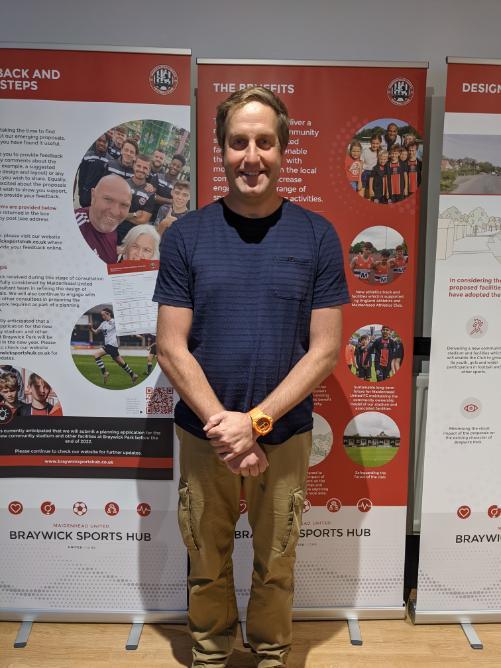


/prod01/wlvacuk/media/departments/digital-content-and-communications/images-2024/240624-Alumni-Awards-2024-Resized.jpg)
/prod01/wlvacuk/media/departments/digital-content-and-communications/images-18-19/220325-Engineers_teach_thumbail.jpg)
/prod01/wlvacuk/media/departments/digital-content-and-communications/images-2024/240627-UN-Speaker-Resized.jpg)
/prod01/wlvacuk/media/departments/digital-content-and-communications/images-2024/240320-Uzbekistan-Resized.jpg)
/prod01/wlvacuk/media/departments/digital-content-and-communications/images-2024/240229-The-Link-Resized.jpg)
/prod01/wlvacuk/media/departments/digital-content-and-communications/images-2024/240627-Lady-Aruna-Building-Naming-Resized.jpg)
